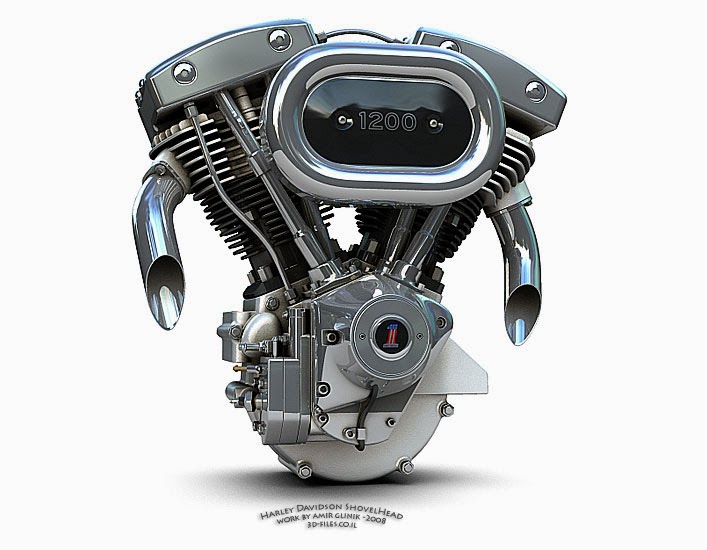March 23rd, 2014
Greetings!
It's been a while since I last posted. I bought an '89 Harley-Davidson Sportster engine from a pleasant gentleman I met on Craigslist in the dead of winter. It was being stored by my trustworthy nephew Bryan in Mesa Arizona until I had a chance to travel down south and pick it up. I recently attended a wedding and reception for my dear daughter Haley in the neighborhood so I picked up the Sportster at the same time.
I had also purchased another Sportster engine from an Arizona seller, this one an '86 and it was also waiting for me at Bryan's house.
I decided to rent a Chrysler Town & Country van instead of taking my beat little family car 1,200 miles to the wedding and bring the engines home. There was a big plastic tub of spare parts with the second engine that included clutch packs, a carburetor w/air cleaner, pushrods and a few other items. I loaded everything into the cavity at the rear of the van. When you raise the rear seat up, it exposes the "stow & go" recess and that's where the engines rested on a couple of layers of cardboard.
As I was leaving my daughter's place after spending a windy night with the family, we headed home across the bridge that spans the beautiful gorge near Shoshone Falls. The wind was still blowing heavy from the West and it was all I could do to keep us in our lane. The engines sitting low in the back of the van helped with our center of gravity, probably keeping us on the road. Later that same morning a couple of semi trucks were blown over on the same bridge we crossed. Here's a video of a local news cast:
Semi gets blown over after we're safely across the bridge.
The engines are safely home in the shop and I can't wait to take them apart and see what's needed to make them like new. The second engine will be used as a parts source for the first one, but they're both pretty complete. I'm still looking for a frame, and so far Paughco is the most likely source. One of their staffers told me that they could make a frame for me that is close to my specifications. They seem to be pretty flexible. I've got to get some more progress on the '51 Chevy I'm doing for a local friend before I can spread Harley parts around the shop.
You can read about the Chevy progress on my Doug's Drugs Blog at: itchykeyboard.blogspot.com. Thanks for reading along with me,
Doug
Greetings!
It's been a while since I last posted. I bought an '89 Harley-Davidson Sportster engine from a pleasant gentleman I met on Craigslist in the dead of winter. It was being stored by my trustworthy nephew Bryan in Mesa Arizona until I had a chance to travel down south and pick it up. I recently attended a wedding and reception for my dear daughter Haley in the neighborhood so I picked up the Sportster at the same time.
I had also purchased another Sportster engine from an Arizona seller, this one an '86 and it was also waiting for me at Bryan's house.
 |
| These tired little power plants sure look cool side by side in my shop. |
As I was leaving my daughter's place after spending a windy night with the family, we headed home across the bridge that spans the beautiful gorge near Shoshone Falls. The wind was still blowing heavy from the West and it was all I could do to keep us in our lane. The engines sitting low in the back of the van helped with our center of gravity, probably keeping us on the road. Later that same morning a couple of semi trucks were blown over on the same bridge we crossed. Here's a video of a local news cast:
Semi gets blown over after we're safely across the bridge.
The engines are safely home in the shop and I can't wait to take them apart and see what's needed to make them like new. The second engine will be used as a parts source for the first one, but they're both pretty complete. I'm still looking for a frame, and so far Paughco is the most likely source. One of their staffers told me that they could make a frame for me that is close to my specifications. They seem to be pretty flexible. I've got to get some more progress on the '51 Chevy I'm doing for a local friend before I can spread Harley parts around the shop.
You can read about the Chevy progress on my Doug's Drugs Blog at: itchykeyboard.blogspot.com. Thanks for reading along with me,
Doug























